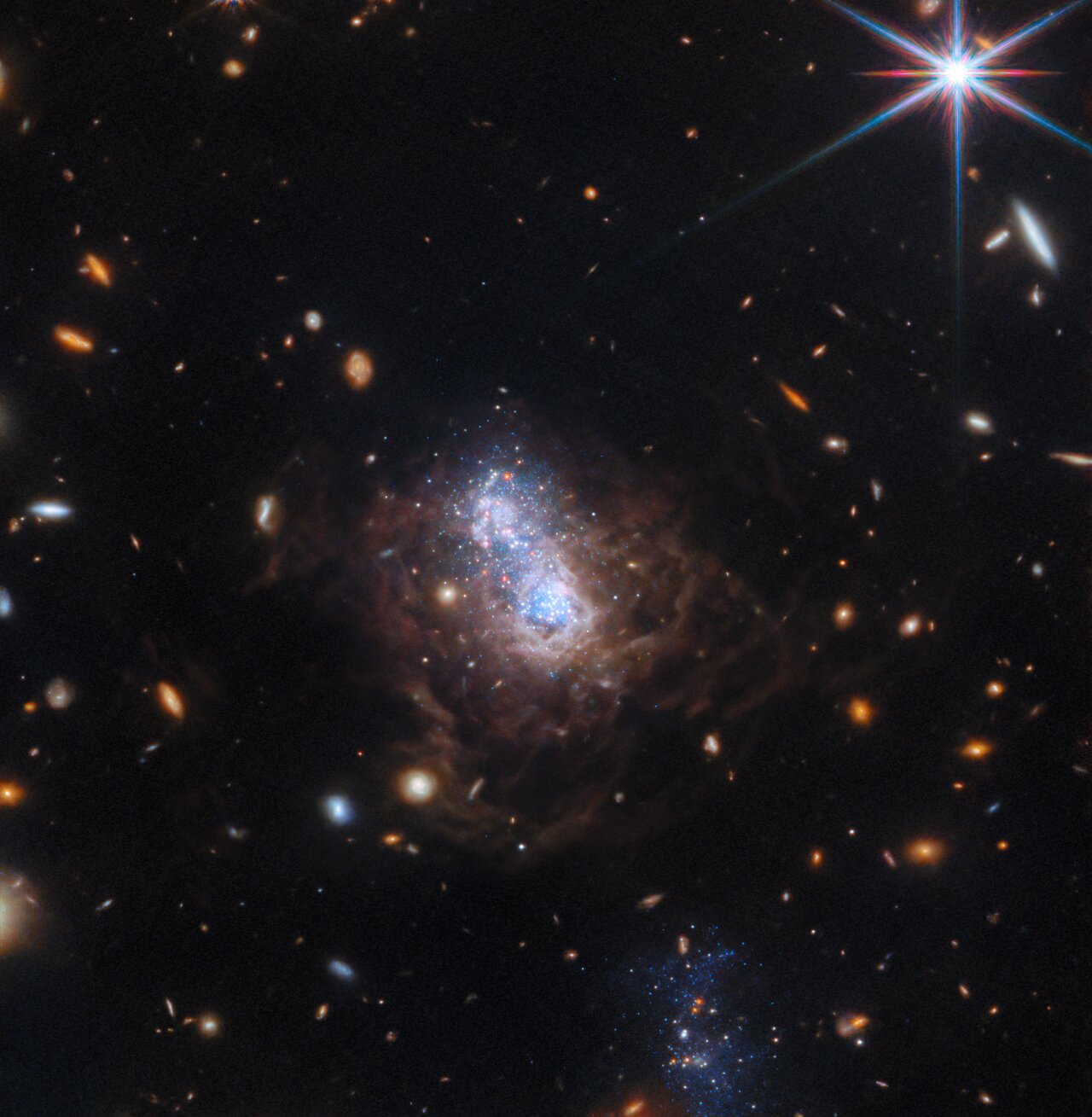 First discovered by Swiss astronomer Fritz Zwicky in the 1930s this James Webb Space Telescope image is the most detailed view ever captured of I Zwicky 18 (I Zw 18).
First discovered by Swiss astronomer Fritz Zwicky in the 1930s this James Webb Space Telescope image is the most detailed view ever captured of I Zwicky 18 (I Zw 18).
Approximately 59 million light years from Earth, I Zw 18 is much smaller than our own Milky Way and is classed as a dwarf It is thought to be typical of galaxies in the early Universe.
At the centre of I Zw 18, two prominent starburst regions are visible. The delicate, wispy brown filaments surrounding the central starburst area consist of gas bubbles heated by intense ultraviolet radiation and stellar winds from hot, young stars.
Just below the dwarf galaxy lies a companion galaxy (the blue region in the lower part of this wide-field image). This companion may have interacted with I Zw 18, potentially triggering its recent star formation.
Dr Olivia Jones, “This wonderful new image demonstrates the power of JWST. It also provides crucial data for our research into the life cycle of dust in I Zw s it represents a great example of the type of galaxies that populated the early Universe it the evolution of stars and stellar dust.”
